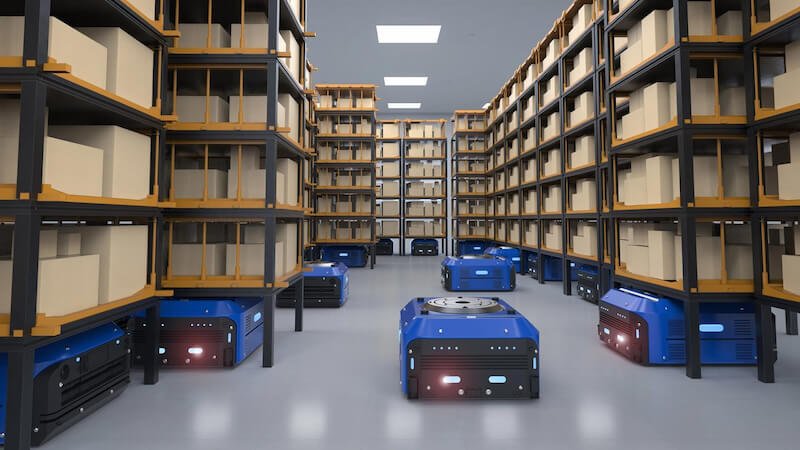
Researchers at MIT could bring about a logistics revolution. The goal: hundreds of automated robots will autonomously process orders and goods in warehouses.
A team of researchers at the Massachusetts Institute of Technology (MIT) recently developed an AI technology that could fundamentally transform logistics. They transformed warehouses into smart centers by optimizing the traffic of hundreds of robots. These robots transport goods across the warehouse and deliver them to humans for packaging and shipping.
But the system presents some challenges. Up to 800 robots must efficiently reach their destination at the same time without colliding. This process is so complex that even the best algorithms have struggled to keep up with the rapid growth of e-commerce or manufacturing.
MIT’s logistics revolution brings fast and efficient shipping
MIT's solution is based on a deep learning method that uses important information about the warehouse, such as robots, planned paths, tasks, and obstacles. This data is used to identify the optimal areas of the warehouse where traffic can be reduced. Ultimately, the goal is to increase overall efficiency. To do this, the AI divides the warehouse robots into groups.
Grouping reduces complexity and thus the effort required for coordination. The researchers found that the method is almost four times faster than common search methods. Furthermore, this deep learning approach could be used in other areas.
This includes planning tasks such as the design of computer chips or the laying of pipes in large buildings. The researchers developed a neural network architecture that is suitable for real-time operation at the scale and complexity of these warehouses.
Robot army resembles a Tetris game
The architecture can encode hundreds of robots in terms of their trajectories, origins, destinations, and relationships with other robots. Viewed from above, the floor of a robotic e-commerce warehouse resembles a fast-paced game of “Tetris.” Once a customer order comes in, a robot travels to an area of the warehouse, grabs the shelf containing the requested item, and delivers it to a human worker.
The employee then removes the item and sends it on its way for shipping. The algorithm uses the grouping mentioned above to prevent any possible traffic jams or even collisions. Logistics processes can be handled quickly and efficiently in this way.
Also interesting:
Source: https://www.basicthinking.de/blog/2024/06/02/logistik-revolution-mit/


